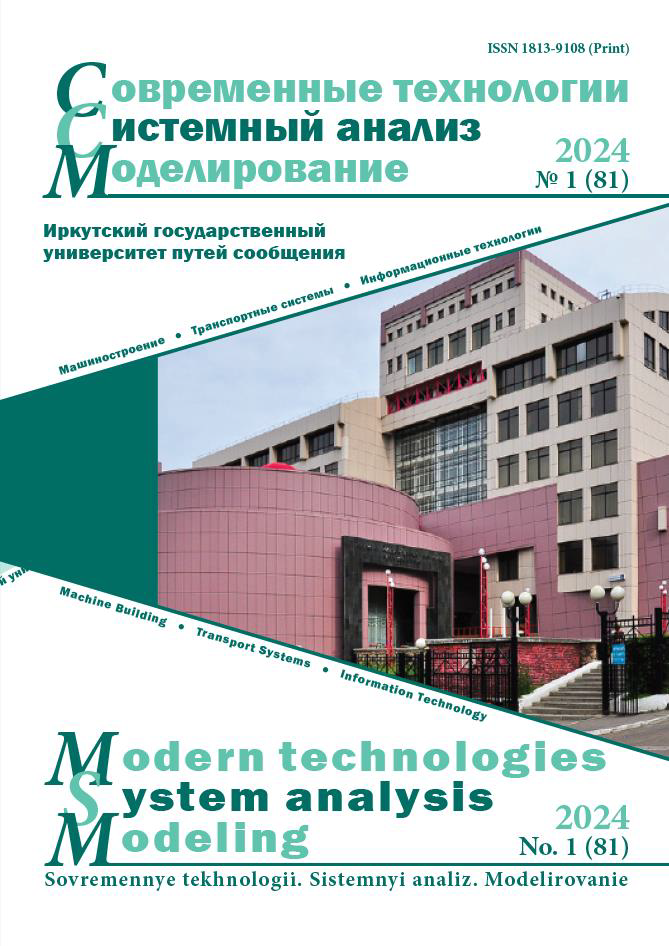The development of a lean production system using the example of a plant
Keywords:
сompetitiveness, logistic methods, lean manufacturing, rational organization of the workplace, losses, work efficiencyAbstract
The article analyzes the relevance and significance of application of the «Lean production» concept in the market of manufacturers abroad and in Russia. The external economic situation and countermeasures related to import substitution give impetus to the reorganization of production systems through the use of the above concept, while the dynamics of changes in the external environment and differences in operating conditions require the development of an appropriate methodological apparatus for the development of effective production systems at the enterprise. Based on the analysis of specialized materials and the generalization of the results of the application of lean production at today's enterprises a modern system of efficient production processes has been formulated, based on a logistic management concept, which is an ideology of the production process capable of solving issues of resource conservation, improving the quality and of labor productivity. Using the classical groups of lean production principles and the modern system of lean production tools, a conceptual model of an effective production system is proposed, based on a multi-level understanding of the lean production apparatus and taking into account the organizational elements of lean production. A study of the production system of JSC «Novosibirsk Switch Plant» showed the main production assets to have a heavy physical and moral deterioration, as well as low renewal rates. The company suffers losses resulting from manufacturing defects. To achieve maximum efficiency of material flows in production with minimal costs, it is necessary to modernize production processes related to logistics, which will allow to be one step ahead of competitors. The existing implementation algorithms for Lean manufacturing have their advantages and disadvantages, can be of a recommendatory nature and used, also, in machine-building plants with in-line production. Currently, JSC Novosibirsk Switch Plant is implementing a fairly simple Lean manufacturing tool – the workspace organization system (5S), allowing to get instant results during implementation and requiring no significant resources. Nevertheless, like all Lean manufacturing tools and technologies, the 5S system must be adapted to the local conditions of the organization of production processes. The method of pilot projects is very good when the implementation of Lean manufacturing tools and technologies is carried out locally at one or several sites of enterprises. Then, with a successful result achieved, the so-called replication of experience takes place taking into account local conditions. In order to evaluate the activities carried out aimed at increasing the productivity of JSC «Novosibirsk Switch Plant», it is proposed to use the «Lean manufacturing wheel» experimental method which can be considered as a qualitative analysis of the investigated production system. The theoretical significance of this work lies in the research of lean production tools and methods with their adaptation to a specific enterprise. The experience of this study can be applied to other enterprises with a similar production system (the so-called benchmarking). The developed list of indicators for the production system under consideration is also of practical importance.
References
Антонова И.И. Бережливое производство: системный подход к его внедрению на предприятиях Республики Татарстан. Казань : Познание, 2013. 176 с.
Гришкова Д.Ю., Чуйкова О.Ю. Особенности внедрения бережливого производства в России // Фундаментальные науки и современность. 2019. № 5 (26). С. 12–18.
Бережливое производство: итоги и задачи // Железнодорожный транспорт. 2019. № 2. С. 70–74.
Туркова А.А., Курбанаева А.Р. Бережливое производство как метод повышения эффективности производства на предприятиях машиностроения // Инновационная наука. 2017. № 12. С. 123–125.
Гришкова Д.Ю., Тесленко И.О. Бережливое производство как основа повышения производительности труда // Сб. науч. тр. Донец. ин-та ж.-д. транспорта. 2018. № 51. С. 45–52.
Бережливое производство как основа для повышения эффективности производства / И.Е. Литвинов, А.Н. Коркишко, М.С. Чухлатый и др. // Экономика и предпринимательство. 2019. № 2 (103). С. 1132–1136.
Арская Е.В., Усатова Л.В. Бережливое производство: проблемы и перспективы // Актуальные проблемы экономическо-го развития : сб. докл. IX Междунар. науч.-практ. конф. Белгород, 2018. С. 48–51.
Вумек Дж.П., Джонс Д.Т. Продажа товаров и услуг по методу бережливого производства. М. : Альпина Паблишер, 2016. 261 с.
Ефимычев Ю.И., Плехова Ю.О. Реализация резервов развития промышленного предприятия на основе концепции бе-режливого производства // Вестн. Нижегород. ун-та им. Н.И. Лобачевского. 2007. № 1. С. 223–227.
Канюкова В.П. Бережливое производство: основные инструменты и принципы бережливого производства // Аллея науки. 2018. Т. 1. № 7 (23). С. 642–647.
Новосибирский стрелочный завод // АО «НСЗ» : сайт. URL : https://nsznsk.ru (Дата обращения: 07.03.2024).
Седашкин А.Д. Управление качеством продукции на основе статистического моделирования процесса расчета выборок // Наука и молодежь : материалы ХIХ Всерос. науч.-техн. конф. студентов, аспирантов и молодых ученых. Барнаул, 2022. Т. 1. Ч. 1. С. 53–54.
Гришкова Д.Ю., Чуйкова О.Ю. Причины производственного брака на предприятии // Современные достижения моло-дежной науки : сб. ст. Междунар. науч.-исслед. конкурса. Петрозаводск, 2019. С. 69–73.
Методы бережливого производства: анализируем, оцениваем и выбираем / А.А. Овчинников, К.П. Фаллер, С.А. Овчинников и др. // Методы менеджмента качества. 2016. № 8. С. 10–15.
Бережливое производство: как сделать первые шаги и не сбиться с пути / А.А. Овчинников, С.А. Овчинников, К.П. Фаллер и др. // Методы менеджмента качества. 2016. № 7. С. 16–20.
Тер-Исраелян А.М. Бережливое производство в России: реалии и перспективы // Вестн. Марийск. гос. ун-та. Сер.: Сельскохозяйственные науки. Экономические науки. 2015. Т. 1. № 4 (4). С. 96–100.
Черкасская Г.А. Бережливое производство и инструменты организации управления производством // Вопросы науки и образования. 2017. № 11 (12). С. 119–120.
Шибанов К.С. Бережливое производство: непрерывный поток и системы вытягивания // Colloquium-journal. 2019. № 2-6 (26). С. 41–42.


